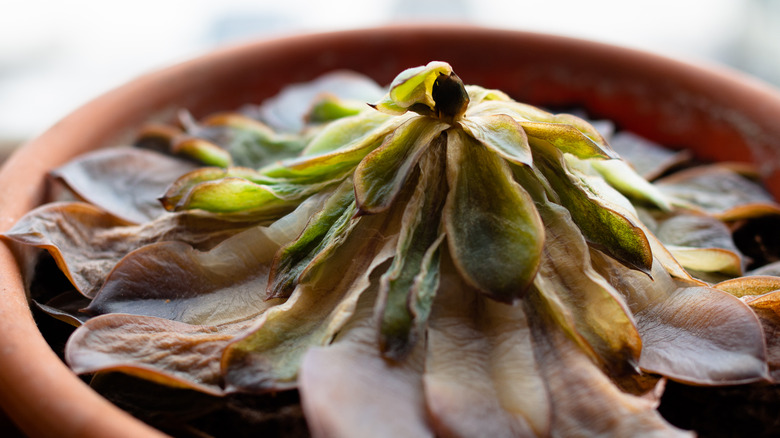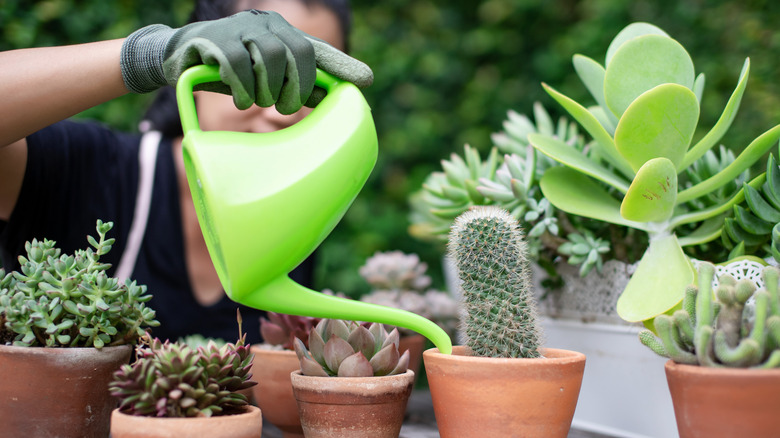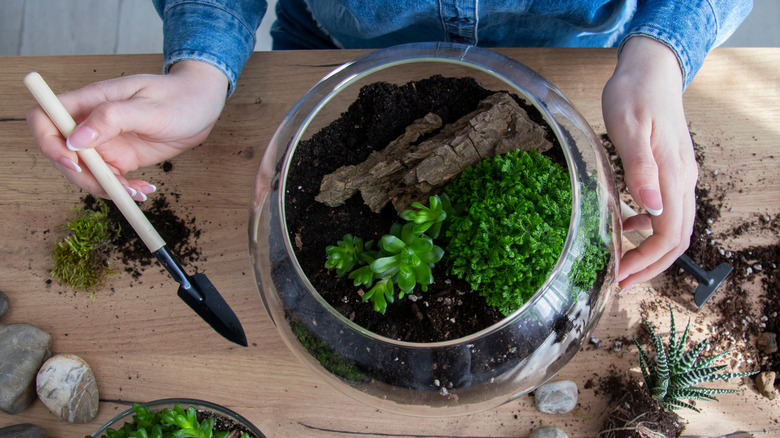How To Revive A Dying Succulent
Keeping plants on your windowsill has a number of aesthetic and health benefits. Naturally, they add a fresh and lively appearance to the home. Additionally, as The Sill notes, greenery helps to improve air quality through photosynthesis, and research has found that being closer to nature can enhance one's mental health and increase happiness (via Scientific Reports). Plants, trees, and flowers can reduce stress and anxiety by reminding us of the peaceful outdoors.
However, all of these benefits go out the window when plants begin to die. Observing your greenery fade, wilt, change color, or droop can cause you to worry, and knowing exactly how to revive your plant can be difficult.
If you've noticed your succulent isn't as perky as it used to be, don't panic – there are many ways to revive succulents. First, you'll need to identify what is causing your plant to deteriorate. Next, you'll need to understand the steps you need to take to bring it back.
Identifying the problem
There are a number of reasons why your succulent may not be looking its best self. According to the Succulent City, the most common reason is overwatering, as succulents are drought-tolerant plants. Signs of overwatering include leaves turning yellow, brown, or black, or having a mushy feeling.
However, if this isn't the problem with your plant, it may be one of the following other causes. Perhaps you've underwatered your succulent – while this is less common, it shows up in shriveled, thinner, or drooping leaves. And if your plant looks burned, it's probably being exposed to too much direct sunlight. Conversely, if your greenery grows tall and droopy, it may need more sun. Another issue you may face is pests, per Leaf & Decay. To identify this issue, you'll need to look closely at your plant, as you'll probably be able to see the insects crawling on the leaves.
Further, if you notice your succulent is shedding lower leaves, don't get too concerned. Succulents shed older leaves as they grow, so this may be completely normal and you won't need to think about how best to revive them, per Succulents and Sunshine.
Reviving your succulent
Once you've narrowed down the problem with your dying succulent, you can then implement the right solution. If you're struggling with overwatering, there are a few things you can do to hopefully revive your succulent.
Easy to Grow Bulbs says to first take note of when you water your plant and begin to water it less. You should also replace the soil, especially if algae has grown on top of it. Additionally, make sure your succulent is in a shallow pot with a drainage hole that hasn't been blocked by roots. If the roots are soaked, you can remove the plant and allow it to air dry in a strainer for a few days.
If your problem is underwatering, soak your plant in water and water it more often; it should go back to normal in a few weeks, per Succulents and Sunshine. Succulents with too much direct sunlight should be moved into indirect sun, per Mountain Crest Gardens, while those that don't have enough sun should gradually be accustomed to warmer and brighter areas. Don't move them directly into the sun right away, however, as this could cause them to wilt. Also, be sure to regularly remove dead leaves from the base of your plant.
For problems with pests, the best solution is to replace the soil and sterilize it, per Succulents Box. You could also try using neem oil, insecticidal soap, or a commercial pesticide.


